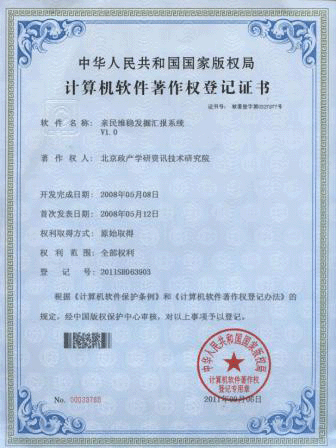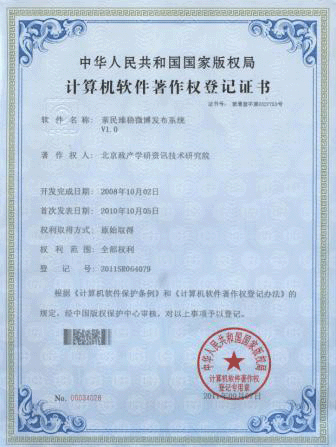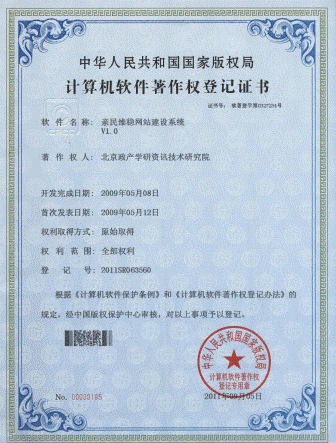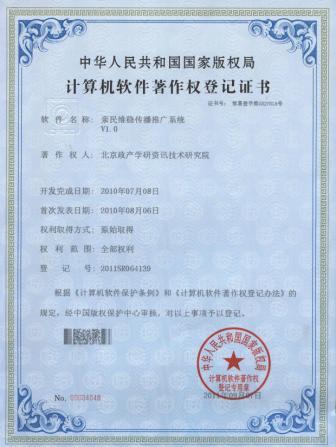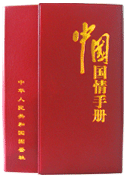亲民维稳热点推荐
- ·汽柴油出口扭亏为盈 石油巨头出口降
- ·维生素出口量萎缩价格下滑--亲稳网络
- ·今年前7月中欧贸易下降0.9%--亲稳舆
- ·我国1-7月矿产资源商品进口量增价跌-
- ·1-6月土耳其为阿第一大贸易进口国--
- ·大闸蟹德国泛滥食客呼吁运回国 进口
- ·今年进口车回暖预计无望--亲稳舆论引
- ·钢铁业无序之忧:一吨钢利润不够买张
- ·美国对华贸易保护主义明显升温--亲稳
- ·日本改从哈萨克斯坦进口稀土--亲稳舆
- ·阿根廷贸易顺差大降--亲稳网络舆情监
- ·取消53种“双高”产品出口退税--亲稳
- ·2012年越俄双边贸易额或达35亿美元--
- ·进出口银行从日本瑞穗融资--亲稳舆论
- ·聚焦紧固件出口退税率--亲民维稳网络
- ·上个月广东外贸进出口开门红评析--亲
即刻使用亲民维稳解决方案!

发掘汇报软件
使用亲民维稳全套解决方案邀请
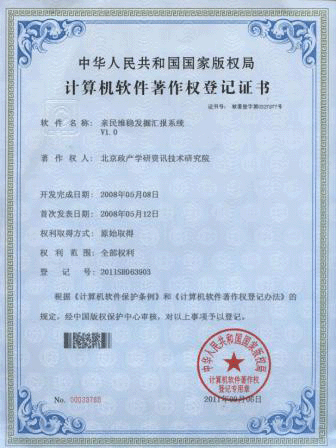
亲稳发掘汇报系统
全球贸易呈失衡发展--亲稳网络舆情监控室
2013-05-15
巴克莱银行近日发布全球贸易报告,报告显示自从发生金融危机以后全球贸易呈现失衡发展,贸易顺差国正向发达国家的方向发展,同时这些国家的国内债券市场(特别是以本币定价的债券市场)也在不断成熟。
Barclays bank recently released world trade report,Report shows that since the financial crisis of global trade imbalances in development,Surplus countries developed towards developed countries,At the same time, these countries domestic bond market(Especially in local currency bond markets pricing)Have been mature.
巴克莱对全球经常账户的失衡作出了以下详细的描述:
Barclays to global current account imbalances in the following detailed description:
这就是说,自从发生金融危机以后,全球贸易发展呈现了一个明显的特征——排除日本在外的发达经济体的出口/GDP整体比重在2011年达到了新的高点(31.2%),稍微超出了之前在2008年达到的30.6%的高点,同时,新兴经济体的该比重却出现了较大幅度的下滑,相对于2005和2006年创下的39.4%高位,去年的比重只有33.1%。这主要是由于2007年以来,新兴经济体的GDP增长远超出它们的出口增长:在2007-2012年期间,新兴经济体的GDP扩张了72%,而出口只扩张了55%(包括以美元计算的商品和服务出口)。相反,对于发达经济体(这里指OECD成员国),出口在这个时期里增长了17%,而GDP只增长了11%。
That is to say,Since the financial crisis,Global trade development presents an obvious features - excluding Japan out of developed economies export/overall GDP proportion reached new highs in 2011(31.2%),A little beyond the previously reached a peak of 30.6% in 2008,At the same time,The proportion of emerging economies is fallen more sharply,Compared to 39.4% in 2005 and 2006 highs,Last year the proportion was only 33.1%.This is largely due to since 2007,GDP growth in emerging economies are far beyond their export growth:In the period 2007-2012,Emerging economies' GDP expanded by 72%,And exports expanded by 55% only(Exports of goods and services included in dollar terms).instead,For developed economies(This refers to the OECD member countries),Exports increased by 17% during this period,While GDP grew just 11%.
同时,在金融危机以后,新兴经济体出口占GDP的比重已经收缩了5.3个百分点,而它们进口占GDP的比重收缩的幅度就小多了,2011和2012年的比重约为30.1%,相对于2004年33.5%的高点,只收缩了3.5个百分点。这明显反映了,当金融危机在08年四季度和09年一季度席卷全球的时候,新兴经济体政府所采取的应对措施,促进了国内需求的增长。因此,在2007-2012年期间,新兴经济体的出口增长了62%,虽然仍小幅落后于GDP规模72%的增幅。相反,2007年以来,发达经济体的进口只增长了15.5%,比16.7%的出口增长还弱,主要因为欧美的公共和私营部门都在去杠杆化。
At the same time,After the financial crisis,Emerging economies' exports as a share of GDP has contracted by 5.3%,And their imports as a share of GDP contraction amplitude is much smaller,About 30.1% of the total of 2011 and 2012,Relative to the high of 33.5% in 2004,Only contracted by 3.5%.This reflects the obviously,When the financial crisis in the fourth quarter of 08 and 09 in the first quarter when the rest of the world,Emerging economies, the government has taken measures,To promote the growth of domestic demand.so,In the period 2007-2012,Emerging economies' exports increased by 62%,Although GDP is still slightly behind the size increase of 72%.instead,Since 2007,Imports increased by only 15.5% in developed economies,Than 16.7% of export growth is weak,Mainly for Europe and the United States of public and private sector deleveraging.
自从金融和债务危机发生以来,这些相对的贸易状况变化带来的净结果,已经对经常账户的失衡形成严重的压制。这大部分反映在美国经常账户赤字的大幅收窄,同时美国在亚洲的主要贸易伙伴国的贸易顺差也大幅收窄。比如说,美国经常账户赤字占GDP的比重已经从2006年6%的高点(2005年为5.9%)跌至2009年的2.7%,而接下来的几年一直保持在接近3%的水平。以占全球GDP份额计算,美国的经常账户赤字比重从2005-2006年的1.6%,下降到过去四年的约0.7%。
Since the financial and debt crisis,These relative to trade the net outcome of a situation change,Severe repression has been formed for current account imbalances.The most reflected in current account deficit narrowed sharply in the United States,At the same time, America's main trading partners in Asia's trade surplus has narrowed dramatically.For instance,The us current account deficit as a share of GDP has fallen from 6% in 2006(5.9% in 2005)Fell to 2.7% in 2009,And in the next few years remained at the levels of close to 3%.In terms of share of global GDP,The proportion of the us current account deficit from 1.6% of the 2005-2006,Fall to about 0.7% over the past four years.
同时,中国经常账户顺差占GDP的比重也从2007年10.1%的历史高位,降至去年的1.9%——以占全球GDP份额计算,就是从07年的0.6%下滑至去年的0.3%。对于亚洲的其它新兴经济体,经常账户顺差占全球GDP的比重也从2004-2009年的0.3%,下降至去年的只有0.1%,同时日本顺差占全球GDP的比重,也从2003-2007年的0.4%,降至2012年的只有0.1%。
At the same time,China's current account surplus as a share of GDP from a record high of 10.1% in 2007,Share of global GDP fell to 1.9% last year - to share,Is from 7 years fell from 0.6% to 0.3% last year.For Asia's other emerging economies,Current account surplus accounted for the proportion of global GDP from 0.3% in 2004-2009,Dropped to only 0.1% last year,As Japan's surplus accounted for the proportion of global GDP,Also from 0.4% in 2003-2007,Fell to only 0.1% in 2012.
实际上,现在主导全球经常账户顺差的主要源头是欧佩克和俄罗斯,2011-12年,它们的顺差占全球GDP比重为0.8%——自2005年以后,该比重在多数年份里一直大概保持在这个水平(取决于能源价格)。另一方面,这些国家的国内需求已经快速上升,同时能源价格的稳定很可能在未来会逐步使它们的顺差下降。
In fact,Now dominate the global current account surplus is the main source of Opec and Russia,2011-12,Accounts for 0.8% of global GDP, their surplus since 2005,The proportion in most years has probably remain at this level(Depends on energy prices).On the other hand,The domestic demand in these countries has been rising fast,At the same time, stable energy prices are likely to in the future will gradually decrease their surplus.
现在就能很好理解,危机前大规模贸易和资本流动的不平衡,在很多情况下是深思熟虑的政策选择带来的结果。要么是作为压制本币汇率促进出口策略的一部分,要么是为了抵抗金融危机(上世纪90年代亚洲金融危机仍记忆犹新),一些发展中国家建立了巨大的外汇储备。而其它国家经历大规模贸易顺差,主要是因为它们拥有丰富的自然资源财富。
Now can be well understood,Before the mass imbalance of trade and capital flows,In many cases is the result of a deliberate policy choice brings.Either as part of the strategy to suppress their currencies to promote exports,Either in order to resist the financial crisis(In the 1990 s Asian financial crisis is still fresh),Some developing countries built up huge foreign-exchange reserves.While other countries have large trade surplus,Mainly because it is rich in natural resource wealth.
亲稳链接:链接亲民维稳,践行稳中求进!
- 中欧贸易需要宏大视角--亲稳舆论引导监测室
- 外贸企业转战新兴市场--亲稳网络舆情监控室
- 中国光伏企业抱团抵制贸易保护主义--亲稳舆论引导监测室
- 中国进出口银行加大对国际船东融资支持力度--亲稳舆论引导监测室
- 中日贸易受影响 安倍访问缅甸打经济牌--亲民维稳网络舆情监测室
- 美国贸易保护现两大新趋势--亲稳舆论引导监测室
- 汽车进口量6个月来首次正增长--亲民维稳网络舆情监测室
- 今年就业需求前三位专业--亲稳网络舆情监控室
- 推进港澳内地贸易自由化--亲稳网络舆情监控室
- 印尼煤在低热值煤进口贸易中受限影响最大--亲民维稳网络舆情监测室
- 欧盟贸易专员称中国在全球贸易中“搭便车”--亲稳网络舆情监测室
- 贸易保护两败俱伤--亲稳网络舆情监测室
- 4月贸易增长远超预期 大规模热钱围城?--亲稳舆论引导监测室
- 进口食品涉嫌犯罪会被追究刑事责任--亲稳舆论引导监测室











